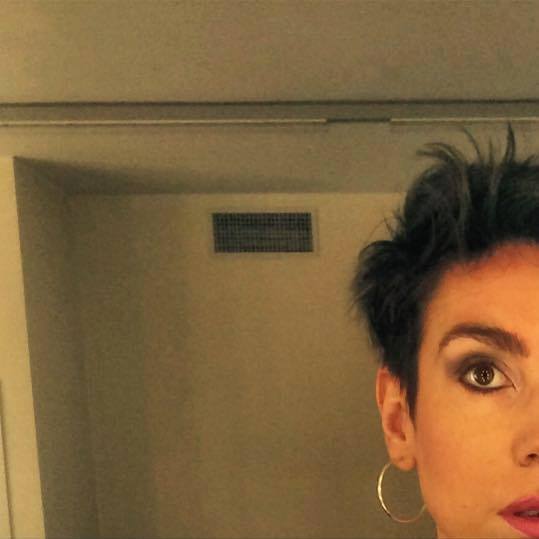Dance to the end of Love is the title of the exhibition that the PAC inaugurated last July on the occasion of the thirtieth anniversary of the mafia massacre that struck via Palestro in Milan in 1993. The idea is to tell the relationship between contemporary art and historical memory through videos, photographs, installations and performances through a bitter “flashback” that takes us back to those terrible years marked by violence and dark events. The horrors flow along the walls of the pavilion which becomes an open archive where everything is within everyone’s reach, where we can choose not to remember or dwell on the tragic nature of history and the impact it still has on our lives today. Memory is not the end but the means through which we can relive those moments trying to process them from an individual but also a collective point of view.

Christian Boltanski, Entre-Temps, 2003. Installation view della mostra al National Museum Japan, Osaka, 2018. Courtesy Estate Christian Boltanski e Marian Goodman Gallery © Christian Boltanski, by SIAE 2023
The starting point is the re-reading of the 2005 Latest News exhibition by Christian Boltanski, centered on the concept of “time”. A time that flows and reminds us that the unstable trace of man very often acts without worrying about the consequences. The artist exhibits Entre-Temps, a video projection from 2003 that presents in crossfading the black and white photographic images of his face in the various stages of life, from seven to fifty-eight years old. The images overlap and reflect the passage of time that manages to tell an entire existence in just a few minutes. Boltanski “freezes” the memory in zero time and makes us reflect on the concept of unrepeatability through a sequence of images that flow without respite, instilling in us a greater awareness of our singular existence on earth. The power of art is just that. Having the ability to create something that wouldn’t actually be possible. Space and time cancel each other out, they are suspended and fluctuate in an imaginary microcosm.

Douglas Gordon, k.364, 2011. Still da video. Courtesy l’artista e Gagosian © Douglas Gordon, by SIAE 2023
The works by the nine artists on display reflect precisely on the concept of time, use it and transform it into a personal memory that tells some events from the past. The five rooms host the works of Yael Bertana, who with her work/video questions all the certainties acquired in a Germany haunted by ghosts of the Nazi past, Douglas Gordon and his musical work which describes a journey through Mozart’s symphony passed to the roots of a memory that sees occupied Poland as the protagonist. Boltanski and the two projections by Clementia Echeverri, Treno from 2007. Water flows on the screens and accompanies the heartbreaking cries of two people who never see each other but increase the discomfort and anguish of desperation.

Maurizio Cattelan, Souvenir di Milano (Progetto “Ninnananna”), 1994. Courtesy Collezione Consolandi, Milano
A small corner is occupied by the work by Maurizio Cattelan, Untitled and Souvenir of Milan from 1994. Two everyday objects are used as vehicles for the construction of memory. A 3-channel video projection by Giulio Squillaciotti which reproduces the work of three archivists described in their daily rituals of production, conservation and enhancement of the work of art. The gallery screens Miguel Gomes‘ Redemption and Maja Bajevic‘s Green Green Grass of Home. At the end of the itinerary, on the balcony, we find the work by Marco Bova and Simona Zecchi who, through a timeline, restore small chronological clippings from the years 1992-93, the terrible terrorist-mafia attack that destroyed the PAC.

Ottonella Mocellin e Nicola Pellegrini, Così lontano così vicino, 2003. Performance all’Ambasciata italiana di Berlino 2015. Courtesy Galleria Lia Rumma
With this exhibition, the PAC recalls the thirty years that have passed since the Via Palestro attack in a special edition of Performing PAC dedicated to memory, to memories that today are plural and cannot be read only with a historical and nationalistic lens but also through individual reworkings. The work of all the artists present in the exhibition helps us to better understand a small part of history by merging the lightness and gravity of the facts thanks to the power of art which can and must be the bearer of a message of peace and hope.
Flavia Annechini
Info:
A.A.V.V. Dance to the end of Love
11.07 – 10.09.2023
PAC – Padiglione d’arte contemporanea
via Palestro 14, Milano
www.pacmilano.it/

Born in 1987. Freelance publisher, passionate about contemporary art and the interaction between visual arts. She graduated from DAMS in Bologna in 2013 with a thesis on the relationship between Futurism and Fashion. She is always looking for emerging artists and discovering subcultures. She collaborated for several years with D’Ars Magazine (now archive) and currently collaborates with ViralWave as art manager and with Juliet Art Magazine.






NO COMMENT